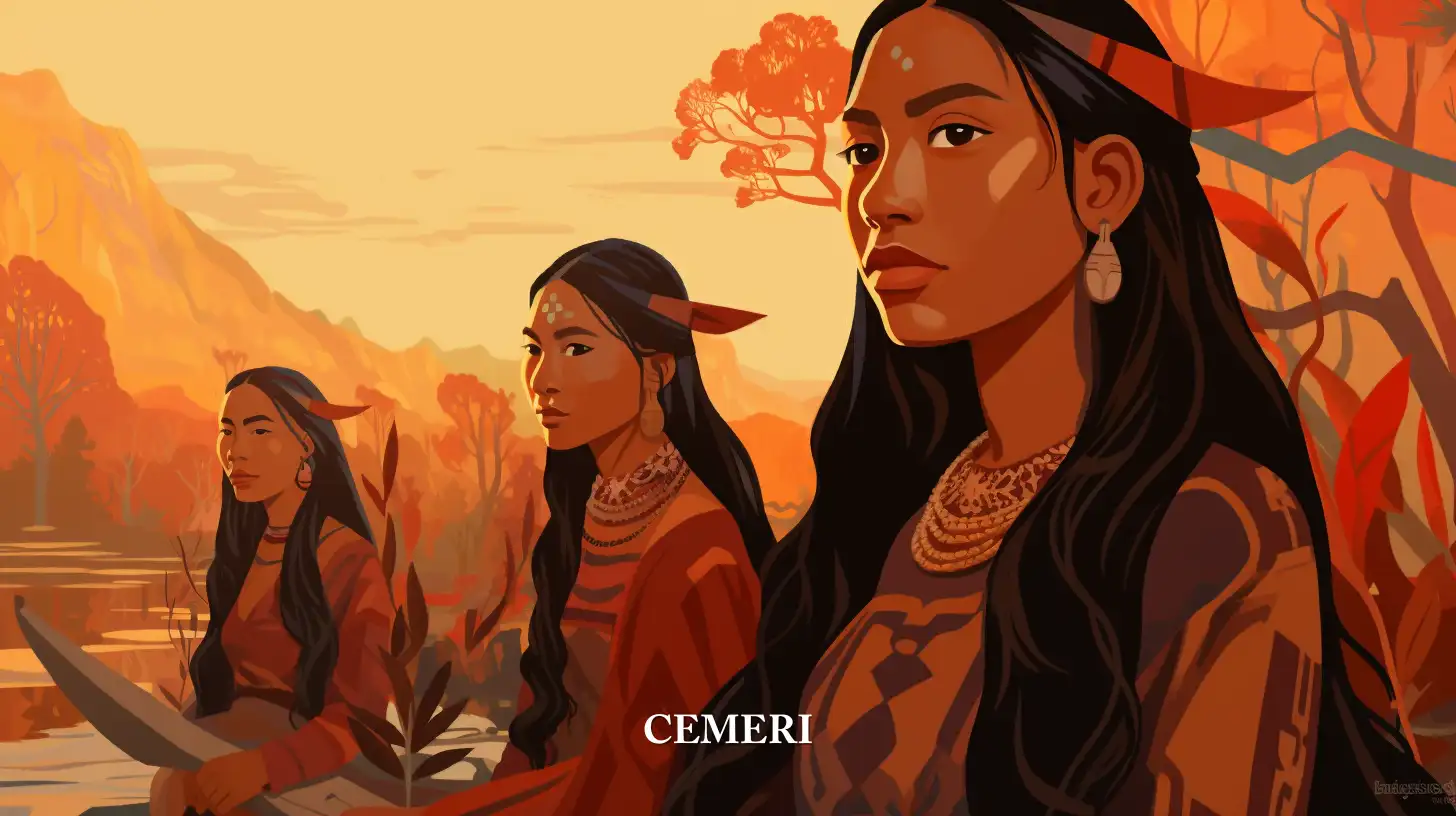Analysis
Valeria Flores
Thousands of indigenous and Afro-Mexican women face institutional helplessness before the possible closure of the CAMIS
- The Houses of Indigenous or Afro-Mexican Women (CAMIS) have been spaces created with the aim of providing medical, psychological and legal care and support to indigenous and Afro-Mexican women.

The Houses of Indigenous or Afro-Mexican Women (CAMIS) have been spaces created with the aim of providing medical, psychological and legal care and support to indigenous and Afro-Mexican women. The social work of the CAMIS is based on a broad agenda that incorporates issues concerning reproductive health, prevention of gender and obstetric violence, human rights, political-electoral and agrarian rights of indigenous and Afro-Mexican women.
“The Houses of Indigenous Women are operated by organizations and/or working groups made up entirely of trained and specialized indigenous women […] who work in coordination with the National Commission for the Development of Indigenous Peoples (CDI ) as the funding entity and responsible for transversality in public attention to the indigenous population.”[1]
The work of the CAMIS is extremely important since, coupled with the context of institutional marginalization that is still very evident for indigenous communities in Mexico, the women of this sector of the population are the object of a series of violence linked to their gender condition.
According to data provided by the National Commission for the Development of Indigenous Peoples, up to the year 2017, the number of CAMIS established in 16 states of the Mexican Republic was 31. These are located in Baja California, Chiapas, Chihuahua , Guerrero, Hidalgo, Jalisco, Mexico, Michoacán, Nuevo León, Oaxaca, Puebla, Querétaro, San Luis Potosí, Sonora, Veracruz and Yucatán.[[2]](https://lasfito.com/wp-admin/ post.php?post=3204&action=edit#_ftn1)
Given the current context of the country, on April 23, 2020, a 75% cut in the available budget for general services, materials and supplies was announced in the Official Gazette of the Federation.
These austerity measures, implemented by decree of President Andrés Manuel López Obrador in order to control the repercussions caused by the Covid-19 crisis, substantially affect the Houses of Indigenous Women since they are forced to carry out their functions using only 25% of the usual budget.
This decision goes against the social approach that initially characterized the federal government's political agenda and directly affects one of the most vulnerable sectors in Mexico. This type of action, together with the frequent public statements by the Mexican president, emphasizes the importance of addressing social problems with a gender perspective that allows guaranteeing the human rights of indigenous and Afro-Mexican women.
The statements by the founder of the Morena party on gender violence that invalidate real problems are a clear expression of the macho culture that permeates Mexican society. It is really worrying that a political figure like the president of Mexico romanticizes stereotypes based on gender, the roles of female subordination within family nuclei and tries to attack gender violence with moralistic advice.
The budget cut represents a serious setback for the goals achieved so far by institutions such as the National Commission for the Development of Indigenous Peoples (CDI), the National Institute of Indigenous Peoples (INPI), the National Commission to Prevent and Eradicate Violence against Women (CONAVIM), the National Council to Prevent Discrimination (CONAPRED) and the Executive Commission for Attention to Victims (CEAV). These bodies have actively contributed to improving the living conditions of indigenous and Afro-Mexican communities.
Given the apparent lack of consonance between the agendas of these institutions with those of the current administration, the heads of CONAVIM, CONAPRED, CEAV and the Undersecretary for Integration and Development of the Ministry of Health have requested their resignation. It is possible that these resignations are due to the clear reluctance and lack of interest that President Andrés Manuel López expresses publicly in reference to the work of these institutions. In addition to this, it is naturally complex to carry out public functions and meet objectives in the absence of a budget.
However, without considering the emergency context derived from Covid-19, the general panorama of the indigenous and Afro-Mexican communities in the country shows the great challenges that this administration and the following ones face to guarantee the human and political rights of a group that historically it has been made invisible and has been the object of negligent policies.
The current situation of indigenous and Afro-Mexican communities is particularly worrisome in the field of health, since most of them are in localities that lack the infrastructure, trained personnel, and supplies necessary to provide decent care to people who request medical attention. Rodolfo Stavenhagen explains that "indigenous people not only have less access to social and economic development and welfare institutions, but also when they have it, the results for them are inferior to the rest of the population."[3]
As a result of omissions and a lack of institutional determination, for decades the indigenous population in Mexico has been in a situation of poverty. Only in 2010, 46.2% of the indigenous population was in a situation of poverty, while another 10.4% in a situation of extreme poverty. [4] In addition to this, the conditions in which indigenous and Afro-Mexican communities find themselves are becoming more complex due to the lack of basic services such as piped water, drainage, facilities to use natural gas fuel in homes and social security.
It is important to address this type of social and institutional emergencies with a gender perspective since, according to the 2010 census prepared by the National Institute of Statistics and Geography, of the 6.9 million people "Speakers of Indigenous Language", 50.86 % are women.[5] This implies that, in addition to the general deficiencies of which this community is a subject, the gender condition adds another series of particular violence and discrimination.
In this sense, Aída Hernández, a researcher at the Center for Research and Higher Studies in Social Anthropology (CIESAS), sharply criticizes the Mexican president, pointing out that "according to the World Bank, 80 percent of the population living in extreme poverty in the nation lives in indigenous municipalities, and that infectious diseases are its main causes of death […], it would be a priority not only not to cut the budgets directed at this population, but to allocate special funds for their protection.” [6]
Indigenous and Afro-Mexican women find themselves in a situation of vulnerability in the face of any type of health emergency, while at the same time they are subjected to violence. Despite the fact that the president of Mexico tries to discredit a problem as serious as gender violence, it is a fact that calls to 911 for reasons of domestic violence have increased considerably as a result of the confinement measures taken to control the spread of the virus.
According to information compiled by INEGI in 2013, 27 out of every 100 women who speak an Indigenous Language declared having been assaulted by their partner.[[7]](https://lasfito.com/wp-admin/ post.php?post=3204&action=edit#_ftn1) From the 2008 Survey on Health and Rights of Indigenous Women, the organization Equis: Justice for Women identified that in the area of couples the 3 most frequent types of violence for indigenous women are: psychological violence, economic violence and physical violence.[8]
Source: Equis: Justice for women, based on ENSADEMI, 2008.
In addition to this, there is a clear lack of access to health institutions and indigenous and Afro-Mexican women do not have social security. According to data from the National Human Rights Commission, 19.0% of Afro-indigenous people do not have an affiliation that gives them access to health services and those who do have it are mostly men (19.8%, while the women with access to this type of service only reach 16.3%).[9]
However, it is necessary to point out that the indigenous and Afro-Mexican population that does have access to health services is the victim of abuse, negligence, and omissions by the medical personnel of health institutions. “The panorama of the situation of the right to health in the indigenous regions is bleak, […] there is great discrimination by medical personnel in the communities towards indigenous people and towards the language they speak; there is a constant lack of medicines in the health centers […] lack of knowledge about where they can direct the demands and complaints of the situations that happen in their community”[[10]](https://lasfito .com/wp-admin/post.php?post=3204&action=edit#_ftn1)
In the case of indigenous women, this situation is particularly common when it comes to gynecological care. This phenomenon typical of the medical field "is the product of a multifactorial framework where institutional violence and gender violence converge." [[11]](https://lasfito.com/wp-admin/post.php? post=3204&action=edit#_ftn1) Discrimination against this sector of the population and the violation of their human rights and women's rights reach intolerable magnitudes within health centers as a product of a patriarchal logic that has been institutionalized and replicated by the staff.
In Mexico it is common for medical care for indigenous women before, during and after pregnancy to be accompanied by mistreatment and medical negligence that puts the life of the woman and her daughter at risk. There are many cases in which mothers have to give birth in totally inadequate and unsanitary spaces, such as outside health centers, because they are denied access or because medical personnel abuse their authority and place contraceptive devices without prior notification. or without first requesting the patient's authorization. This type of violence is called “obstetric violence.
The World Health Organization mentions in this regard that:
“Reports on disrespectful and offensive treatment during childbirth in health centers mention obvious physical abuse, profound humiliation and verbal abuse, non-consensual or coercive medical procedures (including sterilization), lack of confidentiality, failure to obtain full informed consent, refusal to administer pain medication, flagrant violations of privacy, refusal of admission to health facilities, neglect of women during childbirth—resulting in life-threatening but preventable complications—and retention of women and newborns in health centers due to their inability to pay.”[[12]](https://lasfito.com/wp-admin/post.php?post=3204&action= edit#_ftn1)
These conditions of violence already exposed emphasize the importance of the work carried out within the CAMIS. Precisely they address this type of injustice and try to prevent the violation of the human rights of indigenous communities and women belonging to them. The Casas de la Mujer Indígena have trained personnel or members of the same community, in order to provide adequate communication channels that allow a clear understanding of all the procedures and care provided in the facilities.
The budget cut for CAMIS has a direct impact on the well-being of indigenous women, who "in Mexico, four out of five [...] are victims of obstetric violence."[[13]](https://lasfito .com/wp-admin/post.php?post=3204&action=edit#_ftn1) This type of action reinforces the impression that public policies prioritize other programs over those focused on issues of reducing or preventing gender violence and they go against the commitments acquired and embodied in the Sustainable Development Goals.
If this serious error is not corrected, the Mexican government would be in breach of the United Nations Declaration on the Rights of Indigenous Peoples, approved by the General Assembly in 2007, in which it voted in favor. In this document, it is stipulated that “**indigenous peoples have the right, without discrimination, to improve their economic and social conditions, among other spheres, in education, employment, training and retraining professionals, housing, sanitation, health and social security.”[[14]](https://lasfito.com/wp-admin/post.php?post= 3204&action=edit#_ftn1)
On the other hand, in the second section of Article 21, the commitment that States have with respect to carrying out actions that guarantee progress in social conditions and in the field of health is emphasized. Similarly, it is emphasized that one of the sectors that should receive more attention from the authorities is that of women:
“States shall adopt measures, jointly with indigenous peoples, to ensure that indigenous women and children enjoy full protection and guarantees against all forms of violence and discrimination.”[[15]] (https://lasfito.com/wp-admin/post.php?post=3204&action=edit#_ftn1)
It is necessary that these types of problems do not go unnoticed by the rest of society since it would be contributing to the historical invisibility of the indigenous and Afro-Mexican sector in Mexico.
Currently, there are many gaps in public strategies against discrimination and for health care in indigenous communities. The social work that is needed to ensure that these communities find themselves on an equal footing is still immense.
It is clear that in order to understand the dimension of the positive impact that the CAMIS have and the social problems that it tries to solve, it is necessary to understand that adopting the ethnic and gender approaches "are not exclusive but complementary, for which reason their intersection is essential." [16]
CONAMI points to the need "[to] establish the necessary conditions for an observatory on violence against indigenous women to exist, and for each state of the country to have the necessary mechanism to monitor and resolve situations of violence presented from a gender and ethnic perspective. It is necessary to create adequate mechanisms so that when femicide cases are investigated, the ethnic perspective is integrated.”[[17]](https://lasfito.com/wp-admin/post.php?post=3204&action= edit#_ftn1)
If a comparison is made of the number of programs and public policies that meet the demands of the non-indigenous population and the number of programs and projects focused on the Afro-Mexican and indigenous population, we would realize that the budget is fully distributed. asymmetric. In this sense, projects such as the CAMIS acquire greater relevance, since they are the basis for continuing to build more tools and projects focused on improving the conditions of indigenous and Aformexican women through a process of learning good practices.
The closure of the CAMIS would mean that thousands of indigenous women who face situations of violence from their partner, community or health institutions find themselves completely helpless. In 2019 alone, CAMIS provided support to 21,000 indigenous and/or Afro-descendant women.[[18]](https://lasfito.com/wp-admin/post.php?post=3204&action=edit# _ftn1)
This population may be seriously affected by the pandemic due to the lack of health services and medical supplies and the relatively lesser scope of prevention campaigns, but also due to indirect repercussions, in this case, budget cuts that accentuate clear social inequalities. , economic.
Unquestionably, the current institutional challenges are enormous and worsen with actions such as the closure of the CAMIS. The Mexican government, regardless of the circumstances, must take into account the principles and agreements on the protection of Human Rights acquired with international organizations to guide decision-making and the prioritization of short and medium-term objectives.
In the same way, a gender and ethnic approach must prevail in all spheres of public administration, otherwise, situations like the one faced by the Indigenous Women's Houses will arise. Having carried out budget cuts for programs as relevant as the Casas de la Mujer Indígena without first finding an alternative source of financing is simply qualified as a negligent decision.

